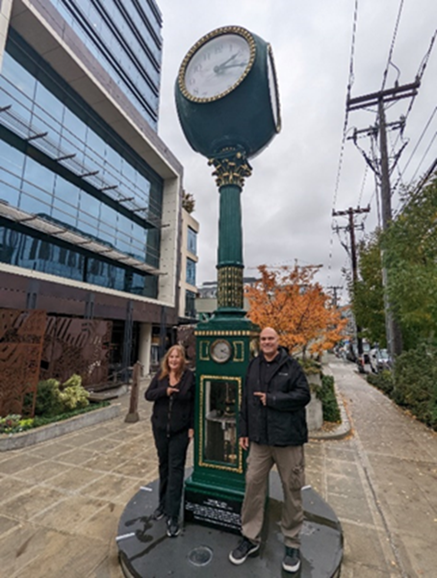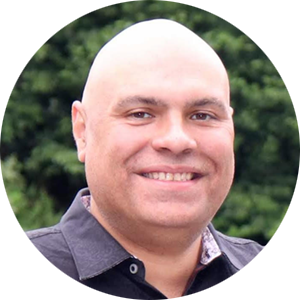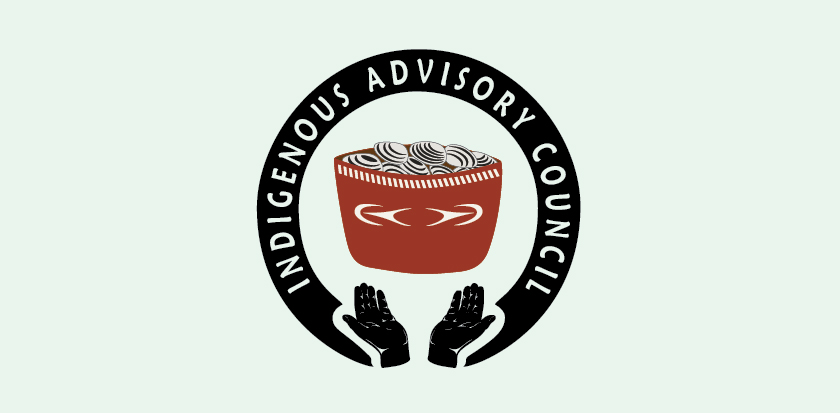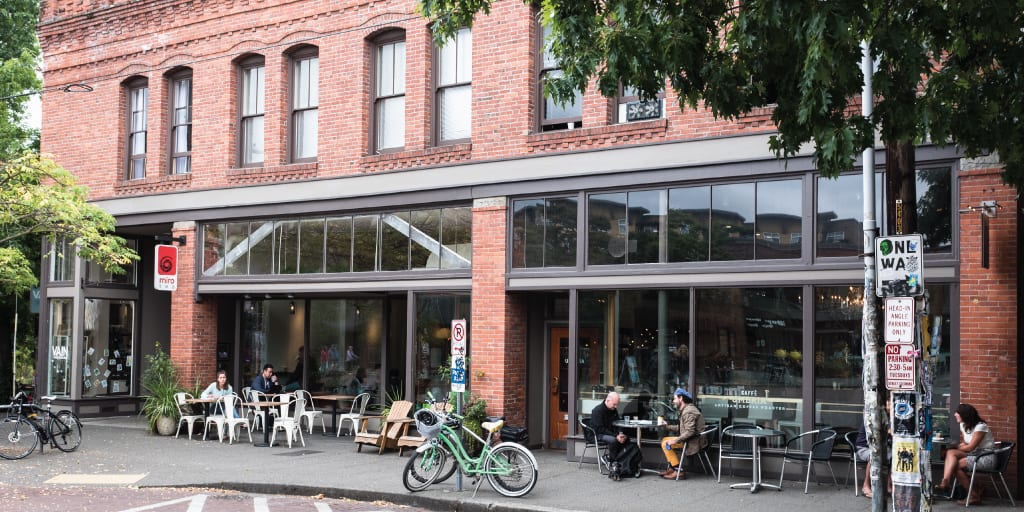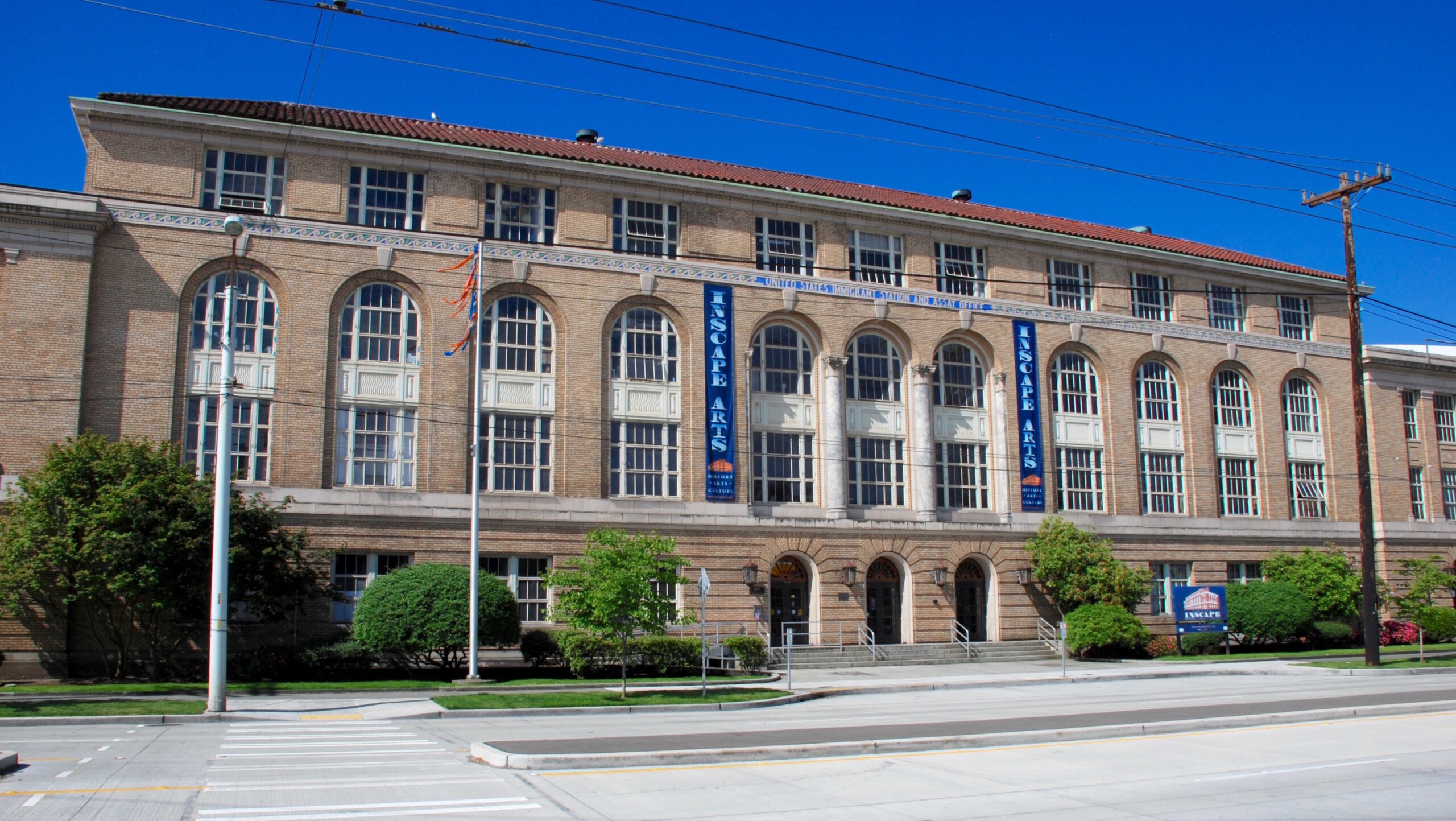
Historic preservation in Seattle begins with community. The Seattle Histories storytelling project highlights the places, people, and events that have shaped the history of Seattle’s communities. These stories, told by community members, emphasize experiences and narratives that may have been overlooked or misrepresented in our city.
Seattle “The City of Clocks”
By Mark Mendez Mayer
It is because of my great-uncle, Joseph Mayer, that Seattle began to be called the “City of Clocks.” By 1935, he had made over 100 street clocks in Seattle. At least 40 of those stood at one point in or around the city. The others could be found in cities and towns all over Washington, Oregon, Montana, California, Nevada, and British Columbia. Seattle still has more street clocks than all of New York City! A Seattle Times article in 1930 said that from 4th & Pike streets in downtown Seattle, a person could see 16 street clocks by standing at the corner and looking a block in each direction. Most of these clocks were produced by my great-uncle, Joseph Mayer.
I’m proud to say my family has been helping Seattle know the time for over 100 years. Today, we take knowing is the time for granted, but before affordable wristwatches and smartphones, people relied on clocks in public spaces. Clocks, watches, and personal timepieces have been around for hundreds of years in many different forms but were for a long time available only to people who could afford them. In the late 1800s and early 1900s, street clocks were considered modern conveniences and unique forms of advertisement. Street clocks were installed in public squares and on street corners all over the country, some by cities and others by private companies using them as popular forms of advertising. Just like today, advertisers back then were looking for prominent ways to advertise their businesses, and street clocks were a great way to do that.
Joseph Mayer & Brothers
My great-uncle Joseph Mayer immigrated from a small town in Germany to Seattle in 1883, when he was only 15 years old. Seattle was a wild frontier town back then! He joined a very small Jewish community centered on Yesler Hill. He had apprenticed in Germany as a silversmith and watchmaker and continued in this trade in pre-fire Seattle. A few years later, Joseph was joined by his brothers Albert and Marcus. In January 1897 they formed Joseph Mayer & Brothers, a jewelry manufacturing company.
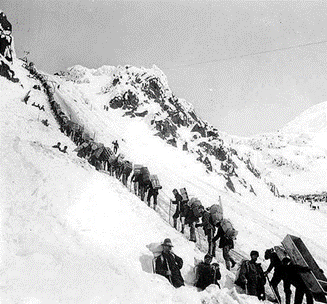
Joseph Mayer and Bros. incorporated just in time for the arrival of the first gold shipment from the Yukon. On July 17, 1897, the steamship SS Portland arrived in Seattle, approximately where the Seattle Great Wheel is today, with 68 miners and “a ton of gold.” The news set off a flood of people coming to Seattle on their way to look for riches in Alaska.
In 1897, Albert and Marcus left for Alaska. They backpacked over the famed Chilkoot Trail, built a boat by hand at Lake Bennett, and went down the Yukon River to Dawson City. They established a retail jewelry store on Front Street on the banks of the Yukon. Albert rejoined the firm in Seattle in 1905, and Marcus traveled to Alaska for over 30 years as a salesman for the company. Marcus was considered a “sourdough,” someone who has lived in Alaska for several winters. He earned the love and respect of nearly every retail jeweler in Alaska and the Yukon.
The Mayer brothers rode the wave of the gold rush Seattle economy to become employers of 150 people and owners of the largest manufacturing and wholesale jewelry firm on the West Coast. The manufacturing division employed craftsmen including silversmiths, goldsmiths, engravers, die makers, enamellers, and more. One of the first contracts of Mayer Bros. was to assay (test) gold from Alaska for the U.S. government. The products manufactured included souvenir spoons, nugget jewelry, emblems, fraternal jewelry, trophies, solid gold wedding bands, ring mounts, silver products, and of course street clocks.
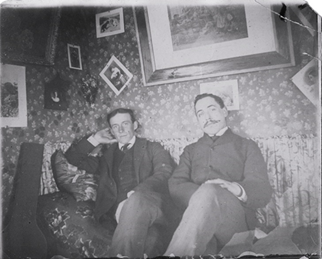

Joseph Mayer was the genius behind the street clocks. He designed and manufactured his own street clocks in Seattle. Jewelers here and throughout the Pacific Northwest quickly embraced these street clocks as icons to mark the front of their shops. The ultimate and most beautiful street clocks Joseph Mayer built were the eight-dial models. These clocks stood over 20 feet tall and featured a unique set of four dials at pedestrian eye level around the top of the base. Some had sweep second hands, and some had second dials at the top of the clock face. The clocks were state-of-the-art at the time and cost at least $3,600 in 1922 (over $60,000 today). Today, Seattle’s street clocks are protected under a City of Seattle historic landmarking ordinance.
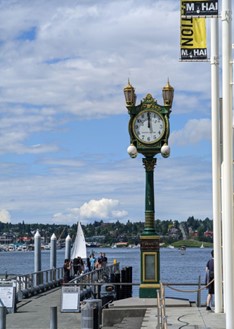
The history of Mayor Bros. is not only part of the history of Seattle, but also part of the history of the Pacific Northwest and Alaska. For around 100 years, Mayor Bros. served the retail jewelers of the area during good times and bad. During the depression of the early 1930s, Mayor Bros. helped many retail jewelers survive the storm.
My great-uncles Joseph, Albert, and Marcus Mayer are an inspiration to me. I learned many valuable lessons from them. For example, most people who traveled to Alaska to become rich went in vain. Around 100,000 prospectors attempted to migrate to the Klondike region. Only 30,000 of those prospectors arrived due to very difficult traveling conditions. Of those 30,000 prospectors who made it to Alaska, only about 4,000 discovered gold! My great uncles were looking for gold as well. However, they also had unique skill sets that most people did not have; they knew how to turn the gold and other precious metals into something that people wanted – jewelry! As soon as they arrived in Dawson City, they opened a retail jewelry store on Front Street on the banks of the Yukon. A combination of the right skill sets and luck helped my great uncles grow Mayer Bros. to become the largest manufacturing and wholesale jewelry firm on the West Coast. My great uncles’ story inspires me to continue to learn new and unique skills as well as hone the skills that I already have to be successful in my life and my career.
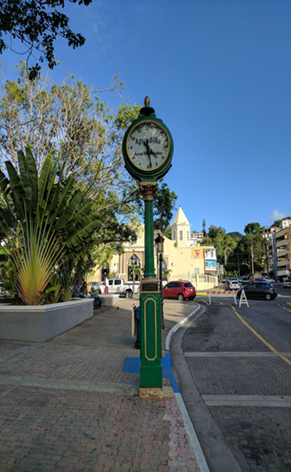
One of my favorite childhood memories is helping my grandpa, Marcus Mayer Jr., wind his Joseph Mayer Street Clock in front of my grandparent’s house in Lake City, Seattle. The clock needed to be wound about once a week with a special key. My family donated that street clock to Aguadilla City, Puerto Rico. The street clock is now in the central plaza of the city.
You can find some of the surviving Mayer clocks in Seattle at the Museum of History & Industry, Ben Bridge Jeweler (soon to be moved to 5th and Pine), F.X. McRory’s Street Clock at 419 Occidental Ave S., Century Square Street Clock at 4th and Pine next to Westlake Center, Seattle Center Mayer clock inside of the Armory, as well as in downtown Bremerton, Anacortes, Lacey, Aberdeen, and on Market Street in San Francisco. Next time you see a Joseph Mayer Street Clock, take a closer look at the love and craftsmanship that went into them. And remember Seattle is still the “City of Clocks.”
A big thank you to Paul Middents and many others, who researched and documented the history of Joseph Mayer and Bros., I’m eternally grateful.
